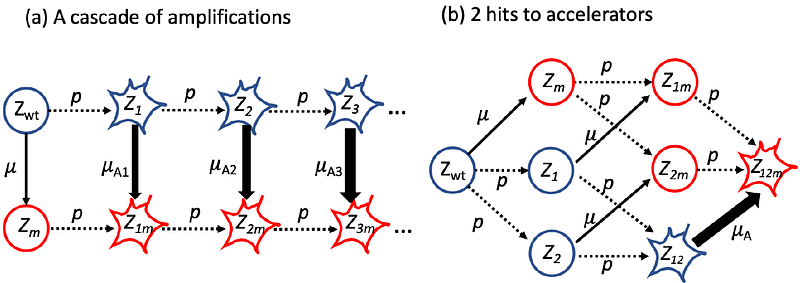Mutant scaling laws reveal that accelerated mutant evolution via gene amplifications requires spatially structured population growth

Mutant scaling laws reveal that accelerated mutant evolution via gene amplifications requires spatially structured population growth
Komarova, N.; Pritchard, J. R.; Wodarz, D.
AbstractEvolutionary processes in growing, well-mixed populations have been thoroughly investigated both experimentally and mathematically. More recently, insights have been gained into mutant evolution in expanding, spatially structured populations, using agent-based models and related simulation approaches. These become computationally challenging at high population sizes, leaving gaps in our understanding of evolutionary processes in microbes and cancer. To address this issue, we derive laws of mutant growth in two- and three-dimensional, expanding cell populations, including multi-step mutant accumulation. These laws, which include both neutral and advantageous mutations, can be used to readily predict mutant abundance in large populations under various assumptions. We apply this approach to ask under what conditions intermediate cell types with an elevated mutation rate can substantially contribute to the accumulation of point mutations. In particular, we focus on gene duplications/amplifications that can increase mutation rate due to increased copy number. We find that cells with elevated mutation rates contribute most in a 2D setting, with substantial contributions also occurring during 3D growth. In contrast to that, for well-mixed, exponentially growing populations, intermediate types cannot accelerate mutant production under biologically realistic assumptions. These results can reconcile contradicting experimental evolution studies.


